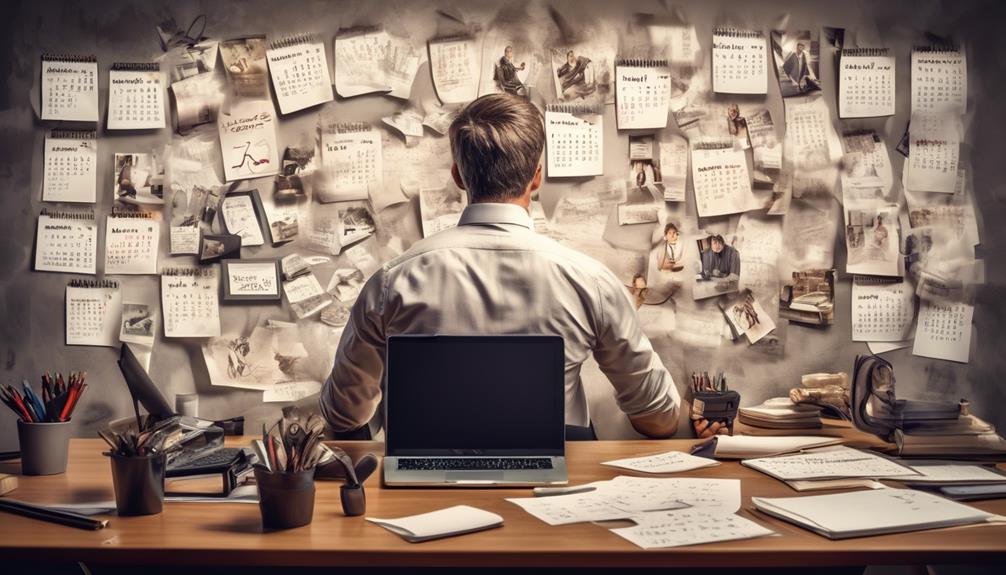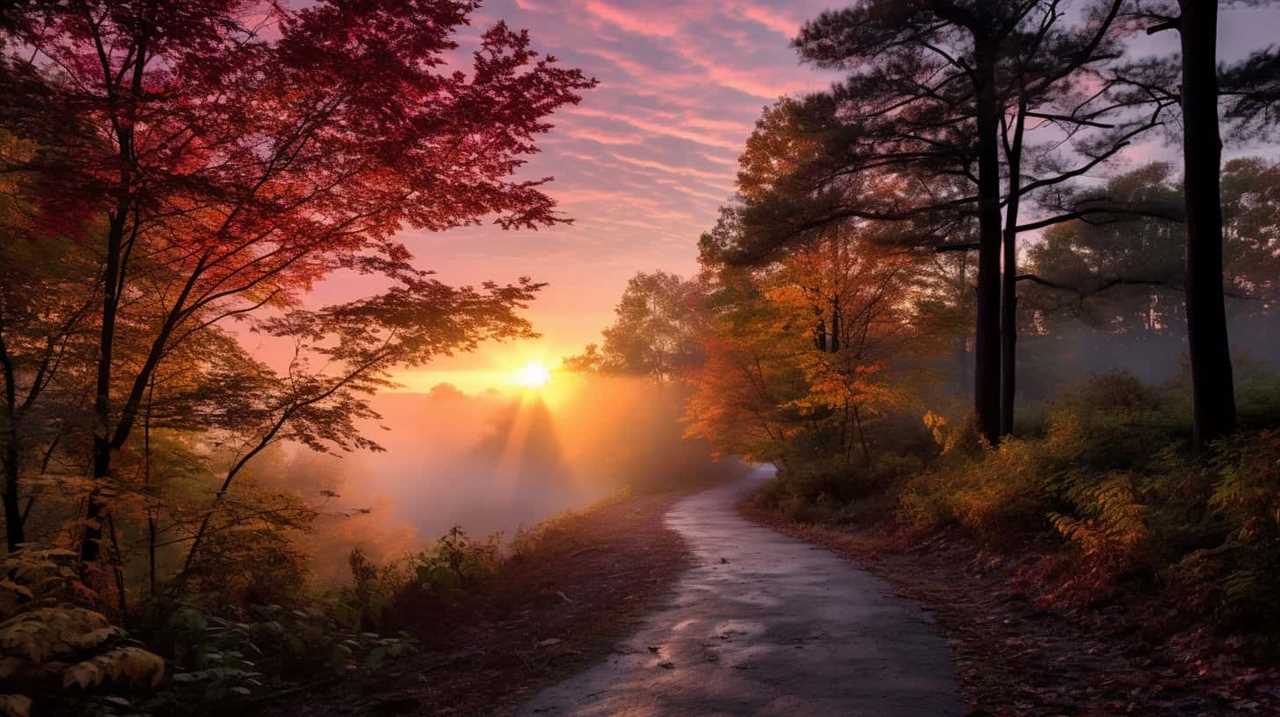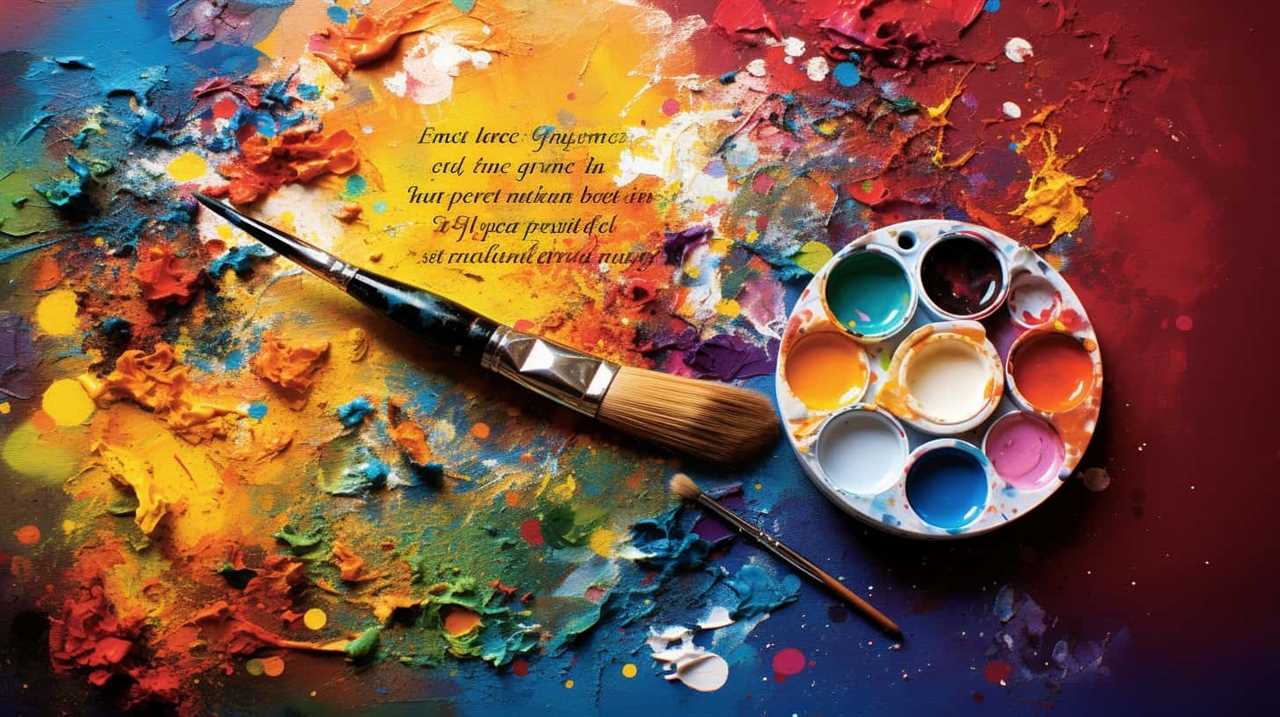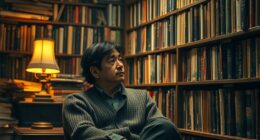As we look at the world of digital art education, we are faced with a point where new opportunities and transformation meet. Technology is starting to influence artistic expression, breaking down old barriers and creating new possibilities.
In this journey towards liberation, we explore the power of digital tools and virtual reality, embracing a future where creativity knows no bounds.
With the rise of social media and collaborative learning, we find ourselves immersed in a vibrant community, where artists from all corners of the world can come together to inspire and be inspired.
As we navigate this ever-evolving digital realm, we must prepare our students for the future of art careers, equipping them with the skills and digital literacy necessary to thrive in an ever-changing artistic landscape.
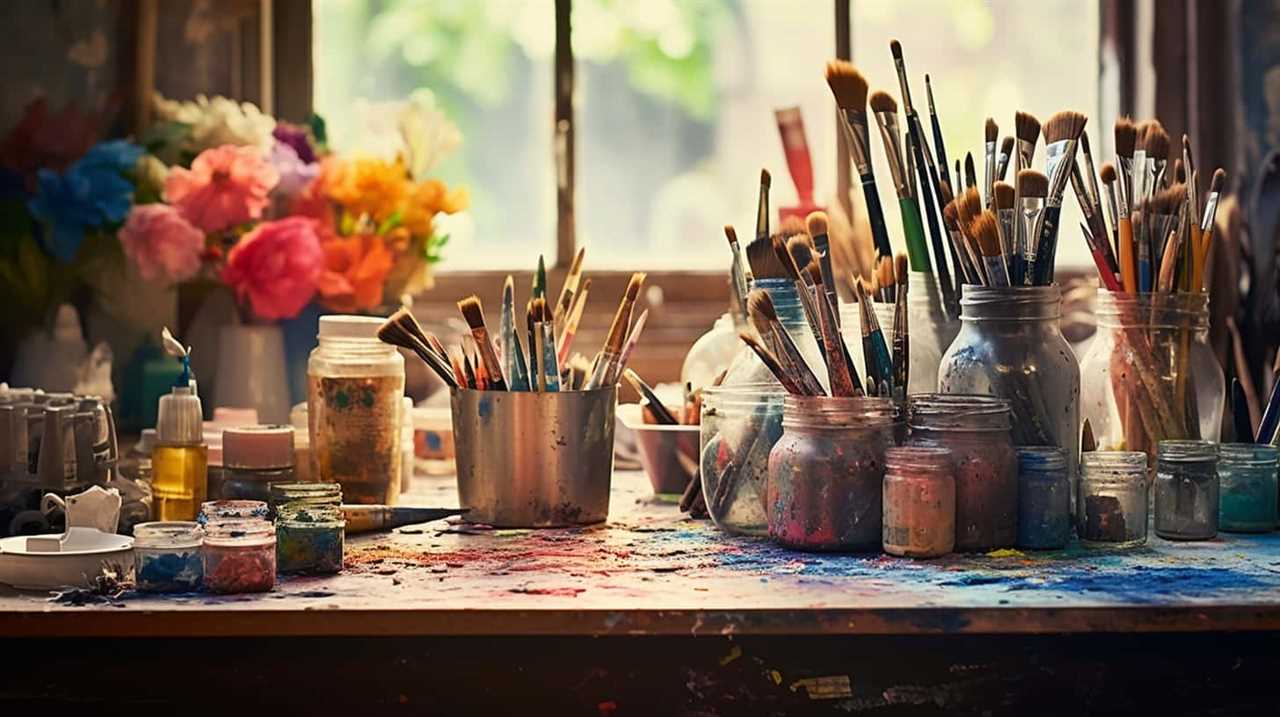
The future of digital art education is upon us, and together, we shall paint a masterpiece of endless possibilities.
Key Takeaways
- The ongoing pandemic has led to challenges in transitioning to remote learning in digital art education, including difficulties in replicating hands-on engagement and concerns about the role of artificial intelligence.
- Integration of technology in art curriculum is revolutionizing the way students learn and create art, with the incorporation of digital art software, online resources, and platforms for wider artistic influences.
- Digital literacy is vital in art education, encompassing skills such as using digital tools, critically analyzing digital artworks, and understanding ethical and legal implications.
- Virtual reality can play a significant role in art learning, providing immersive experiences for exploring and interacting with art, accessing art collections worldwide, and creating a safe environment for artistic exploration.
Current Challenges in Digital Art Education
We are currently facing several challenges in digital art education that we need to address. One of the major challenges is the transition to remote learning. With the ongoing pandemic, many art schools and institutions have had to shift their teaching methods to online platforms. This presents a unique set of challenges for both teachers and students. The hands-on nature of art education makes it difficult to replicate the same level of engagement and interaction in a virtual setting.
Additionally, the role of artificial intelligence (AI) in art education is another challenge that needs to be navigated. While AI has the potential to enhance the learning experience by providing personalized recommendations and feedback, it also raises concerns about the impact on creativity and artistic expression. There’s a fine balance between utilizing AI as a tool and relying too heavily on it, which could stifle the development of critical thinking and problem-solving skills in students.
To overcome these challenges, it’s crucial to invest in professional development for educators to enhance their digital teaching skills and adapt their curriculum to the online environment. Moreover, integrating AI into art education should be done thoughtfully, ensuring that it complements rather than replaces the human element of teaching. Art education should empower students to embrace technology while preserving the essence of creativity and self-expression.
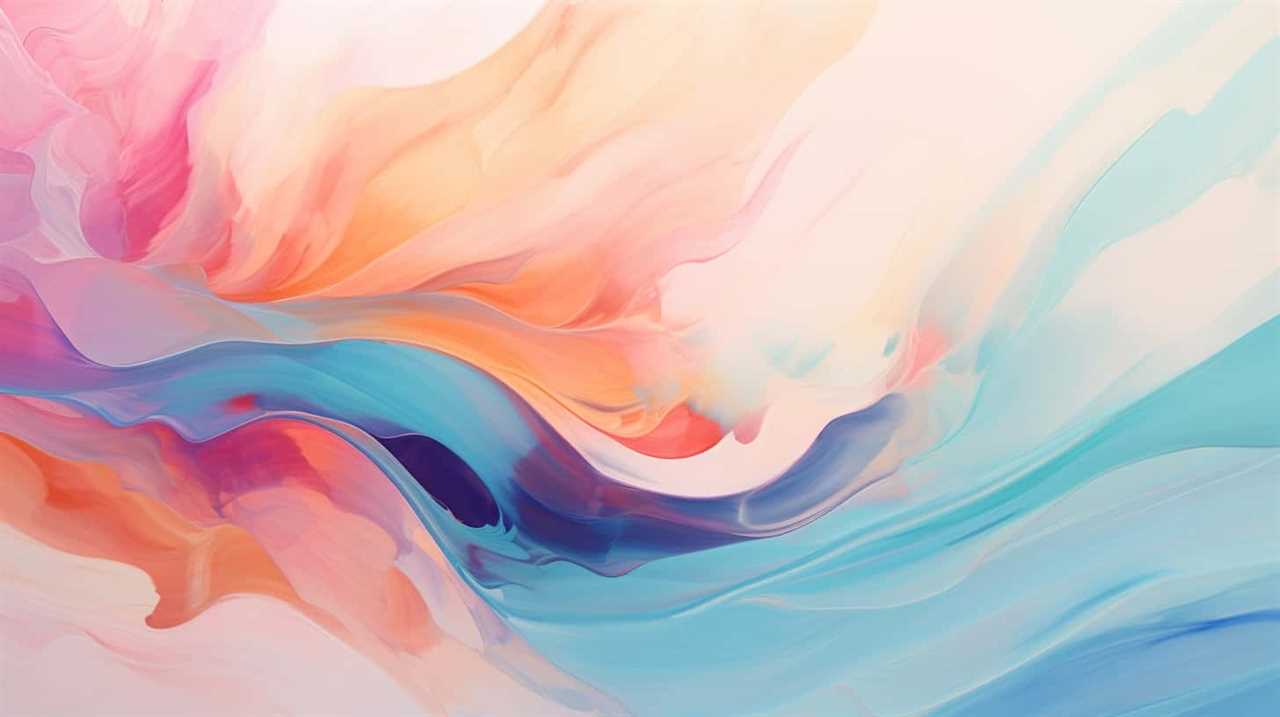
Integration of Technology in Art Curriculum
To further advance digital art education, we must explore the seamless integration of technology into the art curriculum. Technology integration in the art curriculum has the potential to revolutionize the way students learn and create art. By incorporating technology into the curriculum, students can engage with digital tools and platforms that allow them to experiment, collaborate, and express themselves in new and innovative ways.
One way to integrate technology into the art curriculum is through the use of digital art software and applications. These tools provide students with the opportunity to explore different techniques and styles, and to experiment with digital mediums such as graphic design, animation, and virtual reality. By incorporating these tools into the curriculum, students can develop their technical skills while also fostering their creativity and critical thinking abilities.
Another way to integrate technology into the art curriculum is through the use of online resources and platforms. The internet offers a wealth of resources for art education, including online galleries, tutorials, and communities where students can share and receive feedback on their work. By incorporating these resources into the curriculum, students can access a wider range of artistic influences and perspectives, and can develop a greater understanding of the global art community.
Importance of Digital Literacy in Art Education
Digital literacy plays a crucial role in preparing students for the future of art education, enabling us to fully harness the potential of technology in the classroom. In today’s digital age, it’s vital for students to possess the necessary skills to navigate, evaluate, and create digital content. Digital literacy in art education encompasses a wide range of skills, including the ability to use digital tools and software, critically analyze and interpret digital artworks, and understand the ethical and legal implications of digital art.
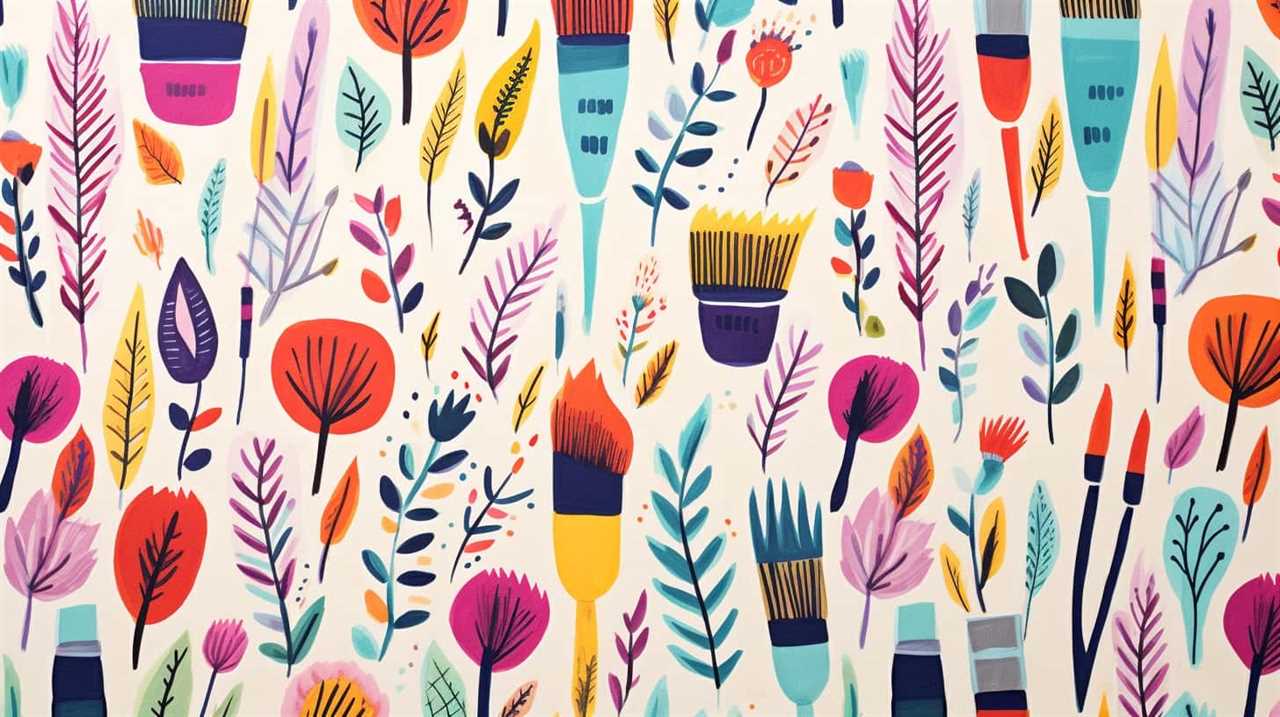
Incorporating digital literacy into art education allows students to explore new creative possibilities and express themselves in innovative ways. With digital tools, students can experiment with different mediums, techniques, and styles, without the limitations of traditional materials. They can also collaborate with peers and artists from around the world, fostering a global artistic community.
Moreover, digital literacy equips students with essential skills for their future careers in the arts. In today’s digital world, many art-related professions require a strong understanding of technology. By developing digital literacy skills, students gain a competitive edge and are better prepared to navigate the rapidly evolving field of digital art.
Transitioning into the next section on the role of virtual reality in art learning, digital literacy serves as a foundation for students to fully engage with immersive technologies and explore new dimensions in art education.
Role of Virtual Reality in Art Learning
One exciting aspect of the future of digital art education is the incorporation of virtual reality into the learning experience. Virtual reality applications have the potential to revolutionize art learning, providing immersive experiences that allow students to explore and interact with art in new and exciting ways.

Imagine being able to step into a virtual gallery and walk around, observing and analyzing artworks from different angles. With virtual reality, students can have access to a wide range of art collections from around the world, without the need to travel or rely on limited physical resources. They can also engage in virtual workshops and classes, where they can experiment with different techniques and mediums in a safe and controlled environment.
Virtual reality can also enhance collaborative learning experiences. Students can collaborate with each other and with artists from different parts of the world, working together in virtual spaces to create and critique artworks. This not only expands their artistic horizons but also fosters a sense of community and global connectivity.
However, it’s important to note that virtual reality shouldn’t replace traditional art education methods. It should be seen as a complementary tool that enhances the learning process. The role of the teacher remains crucial in guiding and facilitating the students’ exploration and understanding of art.
Embracing Digital Tools for Artistic Expression
As we continue exploring the future of digital art education, let’s delve into the realm of embracing digital tools for our artistic expression. Digital art in education has opened up a world of possibilities, allowing us to explore innovative art techniques that were once unimaginable. These tools have revolutionized the way we create and interact with art, pushing the boundaries of our creativity.

One of the most exciting aspects of embracing digital tools is the freedom it gives us to experiment. With a wide range of software and applications available, we can explore different styles, techniques, and mediums with ease. Whether it’s digital painting, 3D modeling, or animation, these tools allow us to express our ideas in ways that were previously limited to traditional mediums.
Moreover, digital tools offer a level of accessibility that traditional art materials cannot. With a computer and an internet connection, artists from all over the world can connect, collaborate, and share their work. This democratization of art allows for a diverse range of perspectives and voices to be heard, breaking down barriers and challenging traditional notions of what art can be.
The Future of Traditional Art Techniques in a Digital World
As technology continues to advance, the question arises: what’s the future of traditional art techniques in a digital world?
While some may argue that digital tools can never replicate the authenticity and skill of traditional techniques, others believe that adapting traditional art forms to the digital medium opens up new possibilities for creativity and innovation.
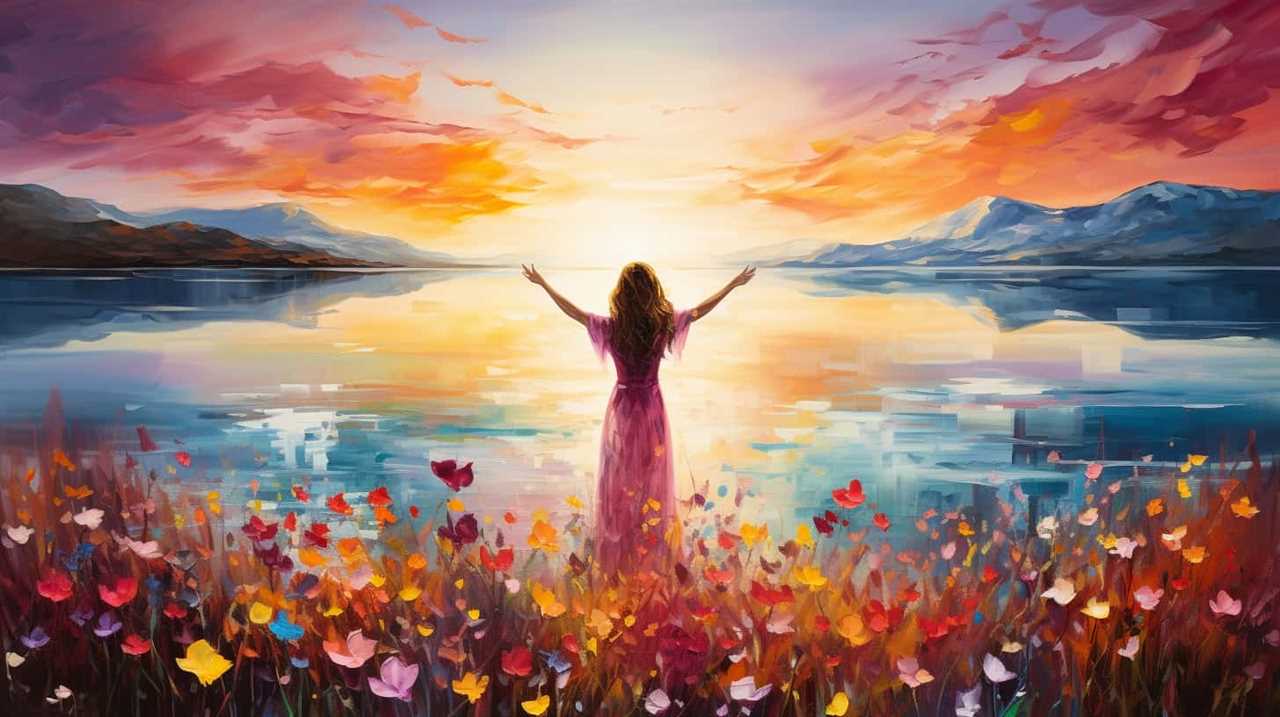
It’s important to explore how traditional art techniques can be preserved and integrated into the digital realm, ensuring that the rich history and craftsmanship of traditional art continue to thrive in the ever-evolving digital landscape.
Traditional Vs. Digital Techniques
We have witnessed a noticeable shift towards incorporating digital techniques in art education, raising questions about the future of traditional art techniques in a digital world.
As technology continues to advance, digital art techniques offer new possibilities and innovative ways of creating art. With tools like digital painting software and 3D modeling programs, artists can explore new dimensions and experiment with different styles and techniques.
However, this doesn’t mean that traditional art techniques will become obsolete. There’s a unique charm and authenticity in traditional art that can’t be replicated digitally.

The future of traditional art techniques lies in finding a balance between the digital and traditional worlds, where artists can combine the best of both worlds to create truly remarkable and captivating works of art.
As the digital landscape continues to evolve, it’s important to embrace these advancements while also preserving the rich tradition of traditional art techniques.
Adapting Traditional Art?
To adapt traditional art techniques in a digital world, we must find a harmonious blend between the two mediums. As technology continues to advance, it’s imperative that we bridge the gap between traditional and digital art to ensure that both forms can coexist and complement each other.
Here are three ways in which we can achieve this:

- Embracing digital tools: By incorporating digital tools and software into traditional art practices, artists can enhance their work and explore new possibilities. This allows for more experimentation and creativity while still maintaining the essence of traditional techniques.
- Combining traditional and digital mediums: Artists can utilize both traditional and digital mediums in their artwork, creating a unique fusion of techniques. This allows for the preservation of traditional art while also embracing the benefits of digital technology.
- Educating artists on digital art techniques: Providing training and resources on digital art techniques can help traditional artists adapt to the digital world. By learning how to use digital tools and software effectively, artists can expand their artistic horizons and reach a wider audience.
New Career Opportunities in Digital Art
As the digital art industry continues to grow and evolve, new career opportunities are emerging for artists.
With the increasing demand for digital content in various industries such as entertainment, gaming, advertising, and virtual reality, there’s a need for skilled digital artists who can create visually stunning and immersive experiences.
This growth in industry demand not only presents exciting job prospects but also highlights the importance of digital art education in preparing artists for these new career opportunities.
Emerging Job Prospects
Digital art education is opening up exciting new career opportunities in fields like animation, game design, and virtual reality. As the digital art market continues to grow, the demand for skilled professionals in these areas is skyrocketing.
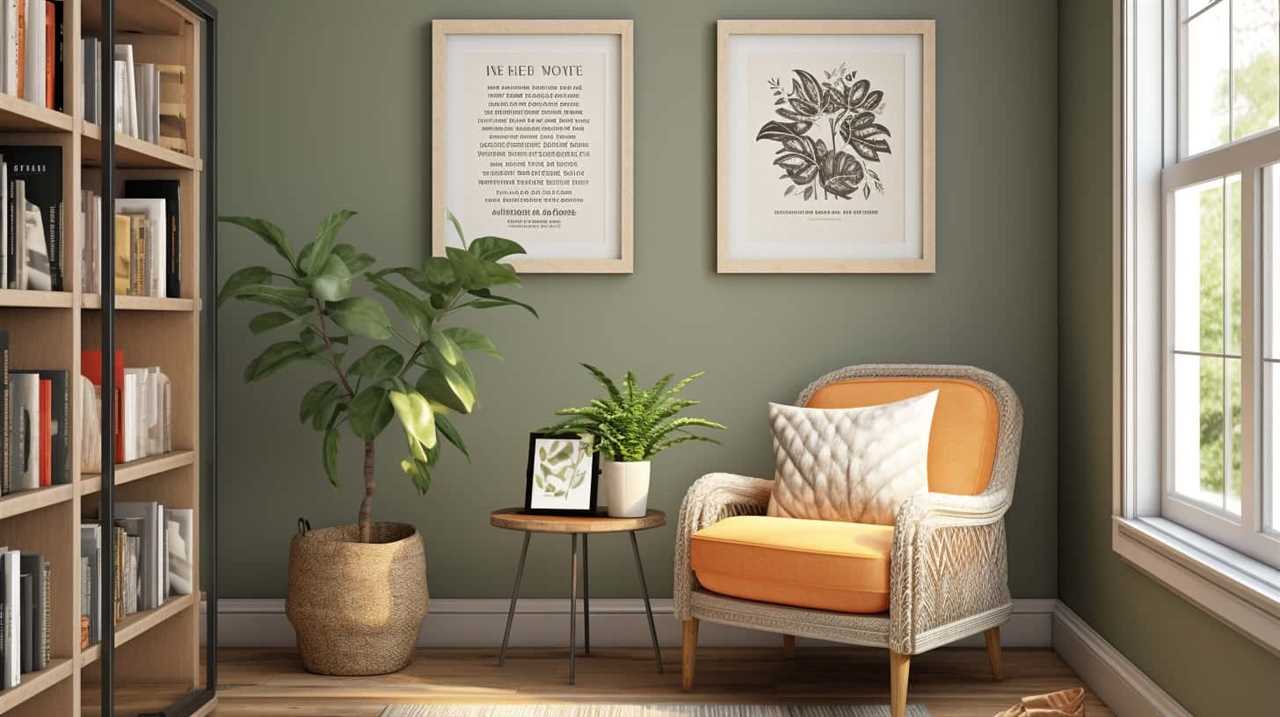
Here are three emerging job opportunities in the digital art industry:
- Augmented Reality (AR) Designer: With the rise of AR technology, there’s a need for designers who can create immersive and interactive experiences. AR designers combine artistic skills with technical knowledge to develop engaging visual content in various industries, including advertising, entertainment, and education.
- UX/UI Designer: As digital products become more prevalent, the importance of user experience (UX) and user interface (UI) design grows. UX/UI designers focus on creating intuitive and visually appealing interfaces that enhance user satisfaction and engagement. They work in industries such as app development, web design, and software development.
- 3D Printing Specialist: With advancements in 3D printing technology, there’s a growing demand for professionals who can create and manipulate digital models for physical production. 3D printing specialists use their artistic and technical skills to design and prototype objects in industries like manufacturing, architecture, and healthcare.
These emerging job opportunities in the digital art field offer a promising future for individuals passionate about creativity and technology. With the right skills and training, one can embark on a fulfilling career in a rapidly expanding industry.
Industry Demand and Growth
The demand for skilled professionals in the digital art industry is rapidly growing, creating new career opportunities for individuals passionate about creativity and technology. As technology continues to advance, industry trends indicate that digital art skills are becoming increasingly valuable in various sectors. From advertising and marketing to entertainment and gaming, companies are seeking professionals who can create visually stunning and engaging digital content. Moreover, the rise of augmented reality (AR) and virtual reality (VR) has opened up even more possibilities for digital artists to showcase their skills. This table highlights some of the new career opportunities in the digital art industry and the skills required for each role:
| Career Opportunities | Required Skills |
|---|---|
| Graphic Designer | Adobe Creative Suite, UI/UX design |
| 3D Animator | 3D modeling, animation software |
| AR/VR Developer | Unity, Unreal Engine, programming skills |
| Digital Marketing | Social media management, content creation |
| Game Artist | Concept art, game design, texturing |
As the industry continues to evolve, staying updated with the latest industry trends and continually honing one’s digital art skills will be essential for individuals looking to thrive in this growing field.

Addressing the Digital Divide in Art Education
To bridge the gap between access to digital art resources, we need to prioritize equitable distribution and availability. In today’s digital age, it’s crucial to address the digital divide in art education to ensure that all students have the opportunity to explore and express themselves through digital art. Here are three key steps we can take to achieve this goal:
- Invest in technology infrastructure: Many schools and communities lack the necessary technology infrastructure to support digital art education. By investing in reliable internet access, computer labs, and digital art tools, we can provide students with the resources they need to engage in digital art creation.
- Provide training and support: Access to technology alone isn’t enough. We also need to provide comprehensive training and ongoing support to teachers and students. This includes professional development programs for educators to enhance their skills in teaching digital art, as well as technical support for students to troubleshoot any issues they may encounter.
- Expand outreach and partnerships: To ensure that digital art education reaches underserved communities, we must actively seek out partnerships with organizations and institutions that can provide additional resources and support. By collaborating with community centers, art organizations, and technology companies, we can expand access to digital art education beyond the traditional classroom setting.
Exploring the Potential of Augmented Reality in Art Classrooms
As we continue our exploration of the future of digital art education, let’s now delve into the exciting potential that augmented reality brings to art classrooms.
Augmented reality tools offer a revolutionary way to enhance traditional art education by providing interactive art experiences that engage and inspire students.
One of the key advantages of using augmented reality in art classrooms is the ability to bring artworks to life. By overlaying digital elements onto physical artworks, students can explore different perspectives and gain a deeper understanding of the artistic process. They can examine brushstrokes up close, view artwork from different angles, and even see how the artwork changes over time. This interactive experience fosters a more immersive and engaging learning environment, allowing students to truly connect with the art.
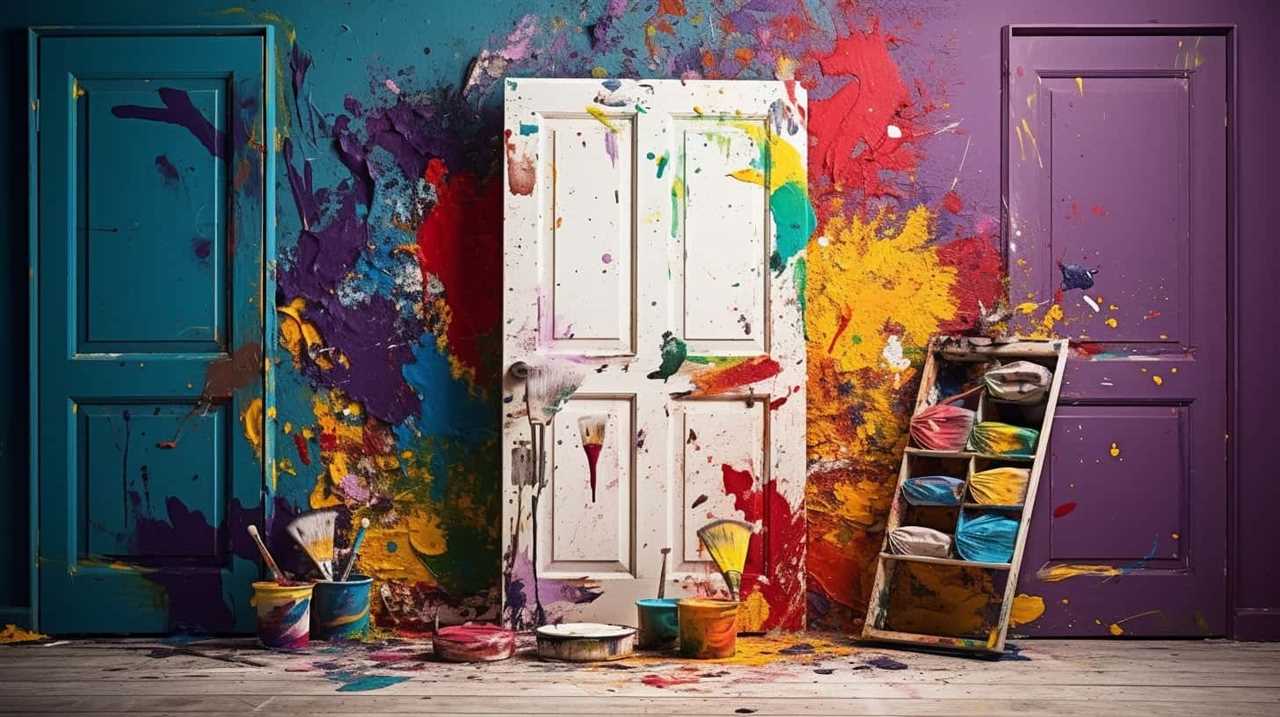
Furthermore, augmented reality tools can also enable students to create their own interactive art experiences. By using AR technology, students can transform their static artworks into dynamic pieces that respond to viewer interaction. This not only encourages creativity and experimentation but also allows students to explore new ways of storytelling and self-expression.
Balancing Digital and Traditional Art Skills in the Curriculum
Augmented reality’s integration into art classrooms opens up new possibilities for balancing digital and traditional art skills in the curriculum. This integration allows students to explore the world of digital art while still honing their traditional artistic skills. By finding a balance between the two, students can develop a well-rounded skill set that combines the best of both worlds.
Here are three ways in which the curriculum can be designed to achieve this balance:
- Integrate digital art tools: Incorporating digital art tools such as graphic tablets, digital painting software, and 3D modeling programs into the curriculum allows students to explore new techniques and mediums. This not only enhances their digital art skills but also encourages creativity and experimentation.
- Emphasize foundational skills: While digital art integration is important, it’s equally crucial to emphasize the development of traditional art skills. By focusing on foundational skills such as drawing, painting, and sculpting, students can build a strong artistic foundation that can be applied to both digital and traditional art forms.
- Encourage interdisciplinary collaboration: Collaborative projects that involve both digital and traditional art can help students understand the interconnectedness of different art forms. By working together, students can learn from each other’s strengths and develop a more holistic approach to art.
Fostering Creativity Through Digital Art Platforms
When it comes to fostering creativity through digital art platforms, there are several benefits to consider.
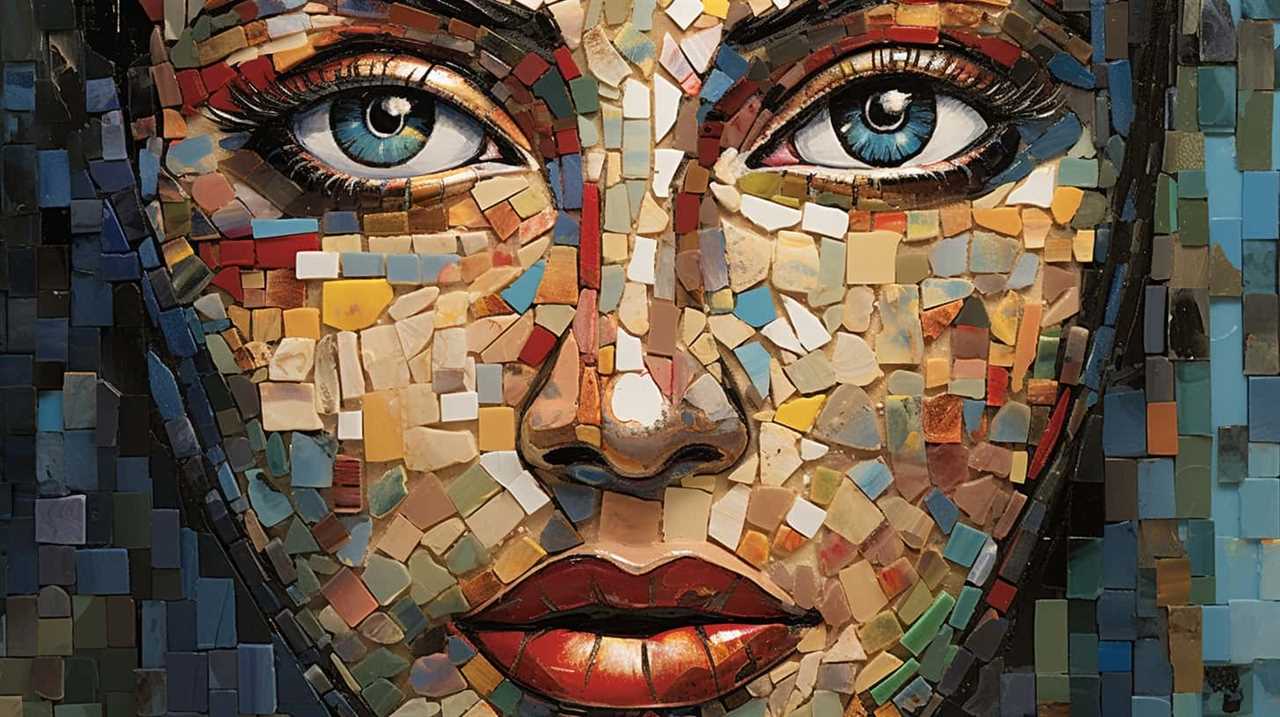
The use of digital tools allows for greater experimentation and exploration, leading to new and innovative artistic approaches.
Additionally, digital art can have a significant impact on traditional art forms, as artists incorporate digital techniques and technologies into their work, pushing the boundaries of what’s possible in the art world.
Benefits of Digital Creativity
In the field of digital art education, we’re discovering the numerous benefits of fostering creativity through the use of digital art platforms. These platforms not only provide a space for artists to explore and develop their digital art skills, but also offer innovative techniques that push the boundaries of traditional art.
Here are three key benefits of digital creativity:
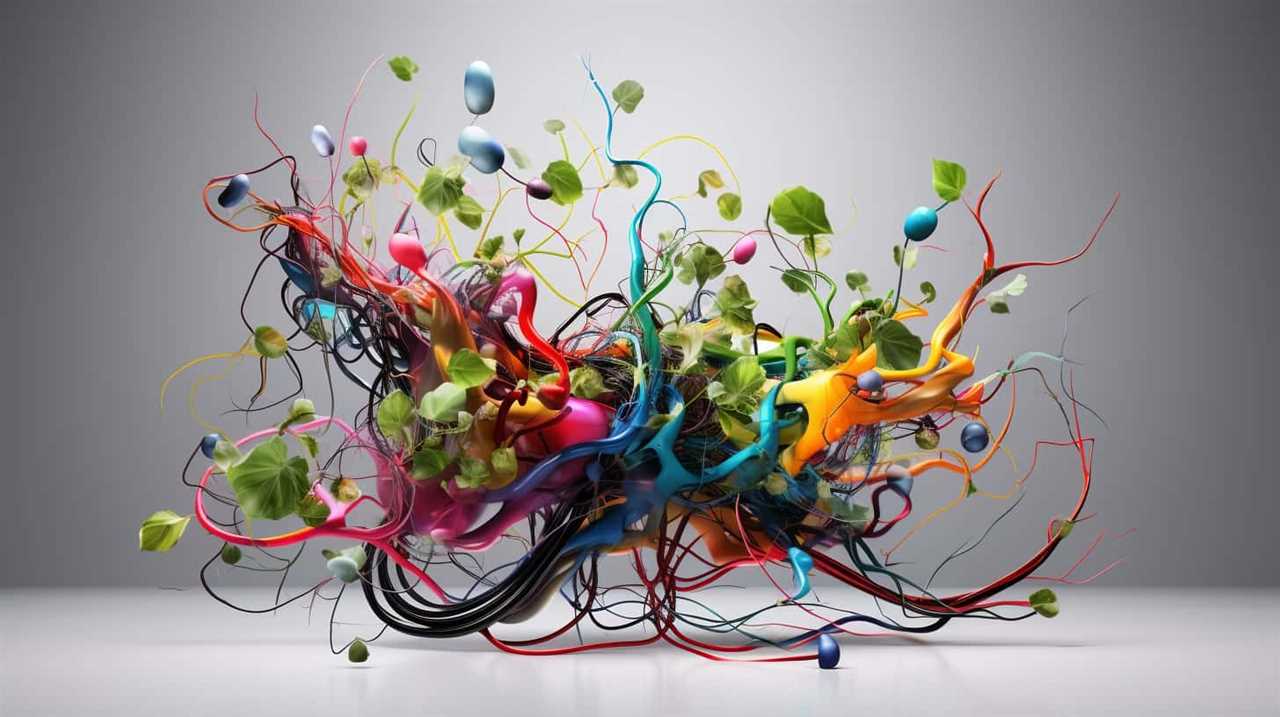
- Accessibility: Digital art platforms make art accessible to a wider audience, allowing individuals from diverse backgrounds to engage with and create art. This opens up opportunities for collaboration and the sharing of ideas, fostering a more inclusive and diverse creative community.
- Experimentation: Digital art platforms provide artists with the freedom to experiment with different tools, techniques, and mediums, without the fear of making irreversible mistakes. This encourages artists to take risks, explore new ideas, and push their creative boundaries.
- Interactivity: Digital art platforms often incorporate interactive elements, such as animation and virtual reality, which enhance the viewer’s experience and create immersive artworks. This interactivity allows artists to engage their audience in unique and captivating ways, creating a deeper connection between the artwork and the viewer.
By embracing digital art platforms, we can harness the power of technology to foster creativity, expand artistic horizons, and create a more inclusive and dynamic art community.
The impact of these digital advancements on traditional art will be explored in the subsequent section.
Impact on Traditional Art
Digital art platforms have a significant impact on traditional art by fostering creativity and expanding artistic possibilities. With the advent of digital tools and techniques, artists are now able to incorporate new elements into their work while still maintaining traditional techniques. The digital transformation allows artists to experiment with different mediums, textures, and colors, pushing the boundaries of what’s possible in traditional art.
This fusion of traditional and digital art opens up a world of possibilities, allowing artists to create unique and innovative pieces that were previously unimaginable. Furthermore, digital art platforms provide access to a global community of artists, enabling collaboration and the sharing of ideas. This exchange of knowledge and inspiration fuels creativity and encourages artists to explore new ways of expressing themselves.

Ultimately, digital art platforms are revolutionizing the art world, bridging the gap between traditional and digital art and propelling creativity to new heights.
The Impact of Social Media on Art Education
Through our exploration of digital art education, we’ve discovered the profound impact that social media has had on the way art is taught and experienced. Social media platforms such as Instagram, Facebook, and Twitter have revolutionized the art world, creating new opportunities and challenges for art educators and students alike.
Here are three ways in which social media has influenced art education:
- Increased Accessibility: Social media has made art more accessible to a wider audience. Artists can now share their work instantly with the world, allowing for immediate feedback and exposure. This accessibility has opened up new avenues for creativity and collaboration, as artists can connect and learn from one another across geographical boundaries.
- Changing Perspectives: Social media has challenged traditional notions of what constitutes art. With the rise of digital art, artists are experimenting with new mediums and techniques, pushing the boundaries of creativity. This shift in perspective has forced art educators to adapt their teaching methods and incorporate digital tools into their curriculum.
- Career Opportunities: Social media has provided a platform for artists to showcase their work and gain recognition. Many artists have built successful careers through social media, with opportunities for commissions, collaborations, and gallery exhibitions. Art educators now have the responsibility of preparing students for digital art careers, teaching them not only artistic skills but also how to navigate the online art world.
Collaborative Learning in Digital Art Classrooms
Collaborative learning in digital art classrooms offers numerous benefits for students. By working together, students can tap into a diverse range of perspectives and ideas, ultimately enhancing their creativity and problem-solving skills.

However, group work also poses challenges, such as differences in working styles and potential conflicts. It’s crucial for educators to create a supportive and inclusive environment that fosters effective collaboration and addresses these challenges.
Benefits of Collaboration
In our digital art classrooms, we discover the many benefits of collaborating with our peers. Collaboration not only enhances our learning experience but also fosters a sense of community and shared knowledge. Here are three key benefits of collaboration in the digital art classroom:
- Enhanced creativity: Collaborating with others allows us to tap into different perspectives and ideas, sparking new creative possibilities. Through collaborative projects, we can explore various artistic techniques, styles, and concepts, pushing the boundaries of our own creativity.
- Interdisciplinary learning: Collaboration in digital art classrooms often involves working with students from different disciplines, such as graphic design, animation, or photography. This interdisciplinary approach exposes us to new ways of thinking and problem-solving, broadening our understanding of art and its applications.
- Skill development: Working collaboratively requires effective communication, teamwork, and leadership skills. By engaging in group projects, we not only improve our artistic abilities but also develop essential skills that are valuable in the professional world.
Enhancing Creativity Together
In our digital art classrooms, we discover the power of enhancing our creativity together through collaboration with our peers. By working on collaborative projects, we are able to combine our unique perspectives and skills to create something truly innovative. Through this process, we not only learn from each other, but we also push the boundaries of what is possible in digital art. Collaborative learning allows us to explore new techniques and experiment with different approaches. It encourages us to think outside the box and challenge conventional ideas. In our digital art classrooms, we are constantly inspired by the creativity of our peers, which motivates us to push ourselves further and strive for excellence. Together, we are able to create art that is truly groundbreaking and transformative.
| Benefits of Collaborative Learning in Digital Art Classrooms | |
|---|---|
| 1. Combining unique perspectives and skills | |
| 2. Pushing the boundaries of digital art | |
| 3. Exploring new techniques and approaches | |
| 4. Motivating each other to strive for excellence |
Challenges in Group Work
As we delve into the challenges of group work in our digital art classrooms, we encounter various obstacles that can hinder the collaborative learning experience. Team dynamics play a crucial role in successful group work, and it can be challenging to find the right balance of skills, personalities, and work styles within a team.

Communication challenges also arise when working in groups, as different individuals may have different communication preferences or may struggle to effectively express their ideas. Additionally, coordinating schedules and managing conflicts can be difficult when working collaboratively on digital art projects.
Despite these challenges, group work in digital art education provides valuable opportunities for students to develop their teamwork and communication skills, which are essential for future digital art careers.
Transition: In order to prepare students for the future of digital art careers, it’s crucial to address these challenges and equip them with the necessary skills and knowledge.
Preparing Students for the Future of Digital Art Careers
We are equipping students with the necessary skills to thrive in future digital art careers. As the digital art industry continues to evolve and grow, it is crucial for students to stay ahead of the curve and be prepared for the future job prospects in this field.
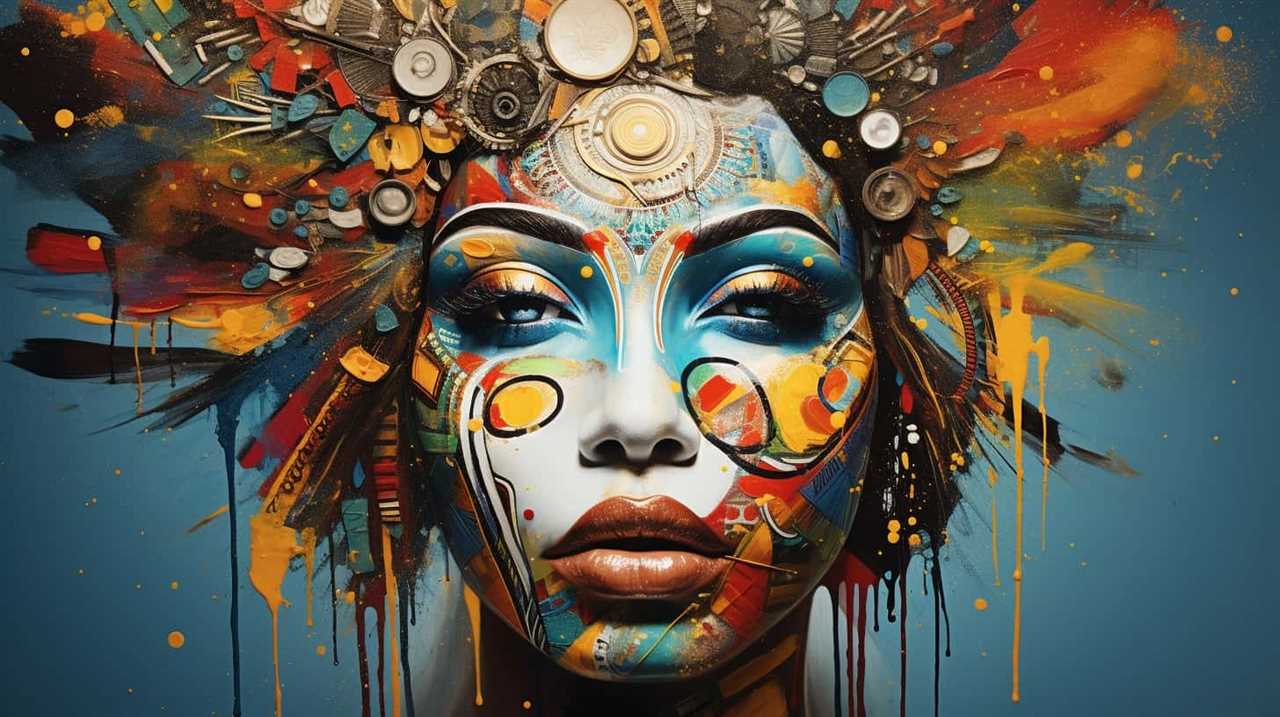
To ensure that students are well-prepared, our digital art education curriculum focuses not only on teaching traditional art techniques, but also on incorporating the latest digital art tools and technologies. By learning how to use software such as Photoshop, Illustrator, and 3D modeling programs, students gain the technical skills needed to create stunning digital artworks.
In addition to technical skills, we also emphasize the importance of creativity and critical thinking in digital art. We believe that in order to stand out in the competitive digital art industry, students must be able to think outside the box and push the boundaries of traditional art forms.
To give you a glimpse of the skills we aim to develop in our students, here is a table highlighting some of the key areas of focus in our digital art education program:
| Digital Art Techniques | Future Job Prospects |
|---|---|
| Digital painting | Concept artist |
| 3D modeling and animation | Character designer |
| Motion graphics | Visual effects artist |
| User interface design | Web designer |
| Virtual reality development | Game artist |
Frequently Asked Questions
How Can Digital Art Education Address the Digital Divide and Ensure Equal Access to Technology for All Students?
Addressing the digital divide and promoting equal access in digital art education is crucial for ensuring that all students have the opportunity to explore and unleash their creative potential using technology.
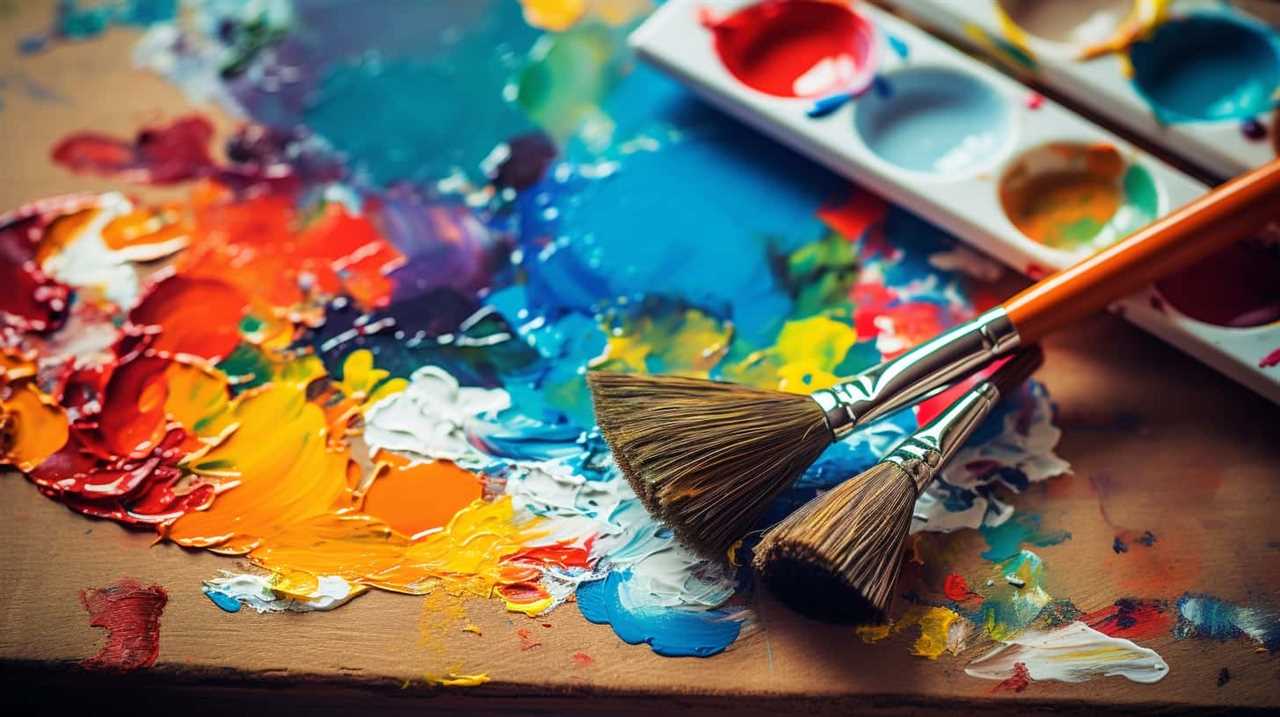
What Are Some Potential Career Opportunities in the Field of Digital Art?
There are numerous potential career opportunities in the digital art industry. From graphic design to animation, the field offers a range of creative and technical roles that allow individuals to express their artistic talents while embracing the digital age.
How Can Digital Art Education Foster Creativity and Artistic Expression?
Digital art education fosters creativity and promotes artistic expression by providing students with the tools, techniques, and knowledge to explore their creativity, experiment with different mediums, and express their unique artistic vision.
What Are the Challenges of Integrating Technology Into the Art Curriculum?
Integrating technology into the art curriculum poses challenges, but it also opens doors to limitless possibilities. We must navigate the ever-changing landscape, adapting and evolving, to ensure that our students are equipped for the digital art future.
How Can Digital Art Education Prepare Students for Future Careers in the Digital Art Industry?
Preparing students for future careers in the digital art industry is essential in our rapidly evolving world. By integrating digital art education, students gain the skills and knowledge needed to thrive in this dynamic field.
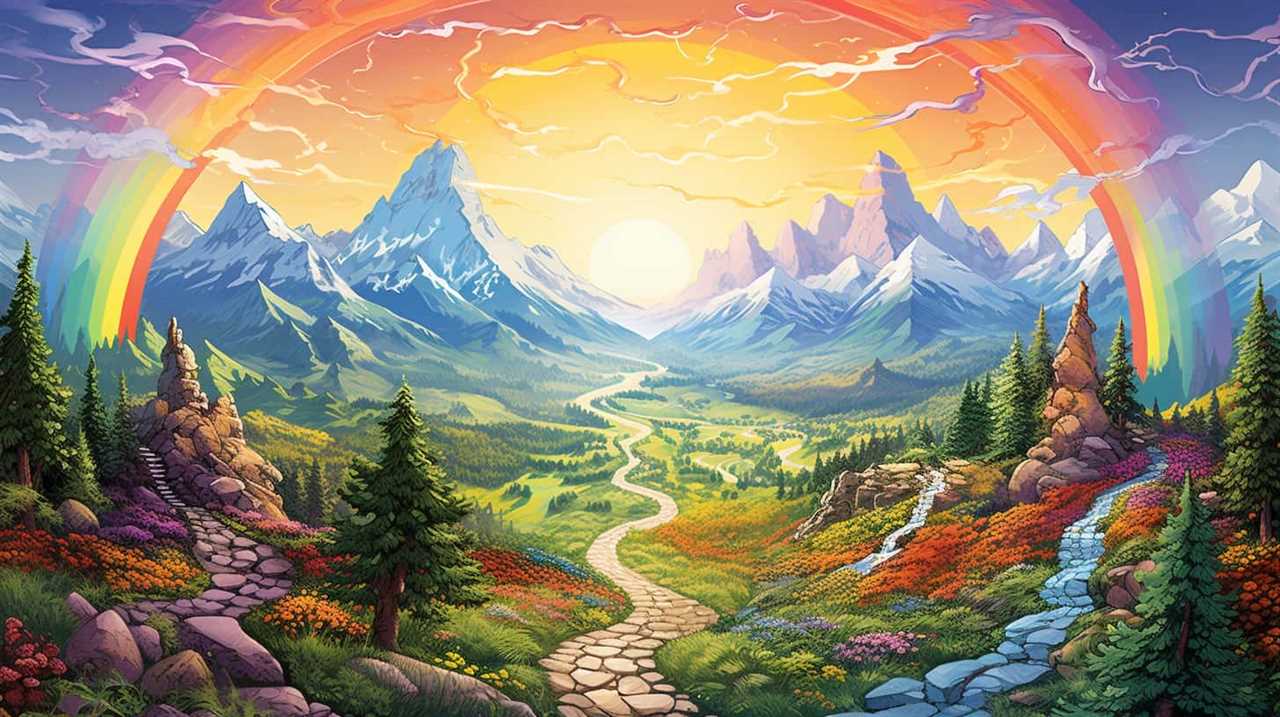
Conclusion
In conclusion, the future of digital art education holds immense potential for both students and educators. By addressing current challenges, integrating technology, and fostering creativity, we can prepare students for the ever-evolving world of digital art careers.
Just as a painting breathes life onto a blank canvas, digital art education breathes life into the minds of young artists, fueling their imagination like a warm summer breeze on a tranquil beach.
The possibilities are limitless, and with the right tools and guidance, the future of digital art education is boundless.
Lauren’s talent in writing is matched by her passion for storytelling. Her love for books and deep understanding of culture and entertainment add a distinct flavor to her work. As our media and press contact, Lauren skillfully bridges the gap between afterQuotes and the broader media landscape, bringing our message to a wider audience.

